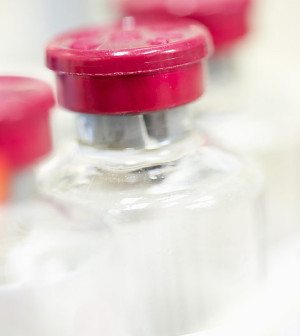- Skip Storing This Everyday Product in the Fridge Door
- Green Tea + B3 Pairing May Boost Brain Health
- Navigating Your Midlife Crisis: Embracing New Possibilities
- City Raccoons Showing Signs of Domestication
- Mapping the Exposome: Science Broadens Focus to Environmental Disease Triggers
- One Week Less on Social Media Linked to Better Mental Health
- Your Brain Changes in Stages as You Age, Study Finds
- Some Suicide Victims Show No Typical Warning Signs, Study Finds
- ByHeart Formula Faces Lawsuits After Babies Sickened With Botulism
- Switch to Vegan Diet Could Cut Your Greenhouse Gas Emissions in Half
New Skin Patch Analyzes Your Sweat During Exercise

How much are you really sweating when you exercise? You may not need to wring yourself dry to find out.
Researchers say they’ve developed a flexible device that sticks to the skin, analyzes your sweat and sends the results to your smartphone.
That’s not all. Researchers say the device — about the size of a quarter — offers insight into whether you need to drink more water or down an energy drink to boost electrolyte levels.
“The intimate skin interface created by this wearable, skin-like … system enables new measurement capabilities not possible with the kinds of absorbent pads and sponges currently used in sweat collection,” said John Rogers, lead author of a study reporting development of the “lab on the skin.”
Rogers is a professor of materials science and engineering, biomedical engineering and neurological surgery at Northwestern University’s McCormick School of Engineering in Evanston, Ill.
The device is disposable, designed to be used once for a few hours while attached to the skin of the forearm or back.
Why bother analyzing sweat?
Because, Rogers said in a university news release, it’s “a rich, chemical broth containing a number of important chemical compounds with physiological health information.”
Researchers tested the device on two groups of cyclists and report their findings Nov. 23 in the journal Science Translational Medicine.
They said the device gave accurate accounts of the acidity of sweat and concentrations of glucose, chloride and lactate.
To get the data, a user takes a smartphone photo of the device. An app then analyzes that photo and displays the information.
More information
Try the U.S. National Library of Medicine on sweat.
Source: HealthDay
Copyright © 2025 HealthDay. All rights reserved.










